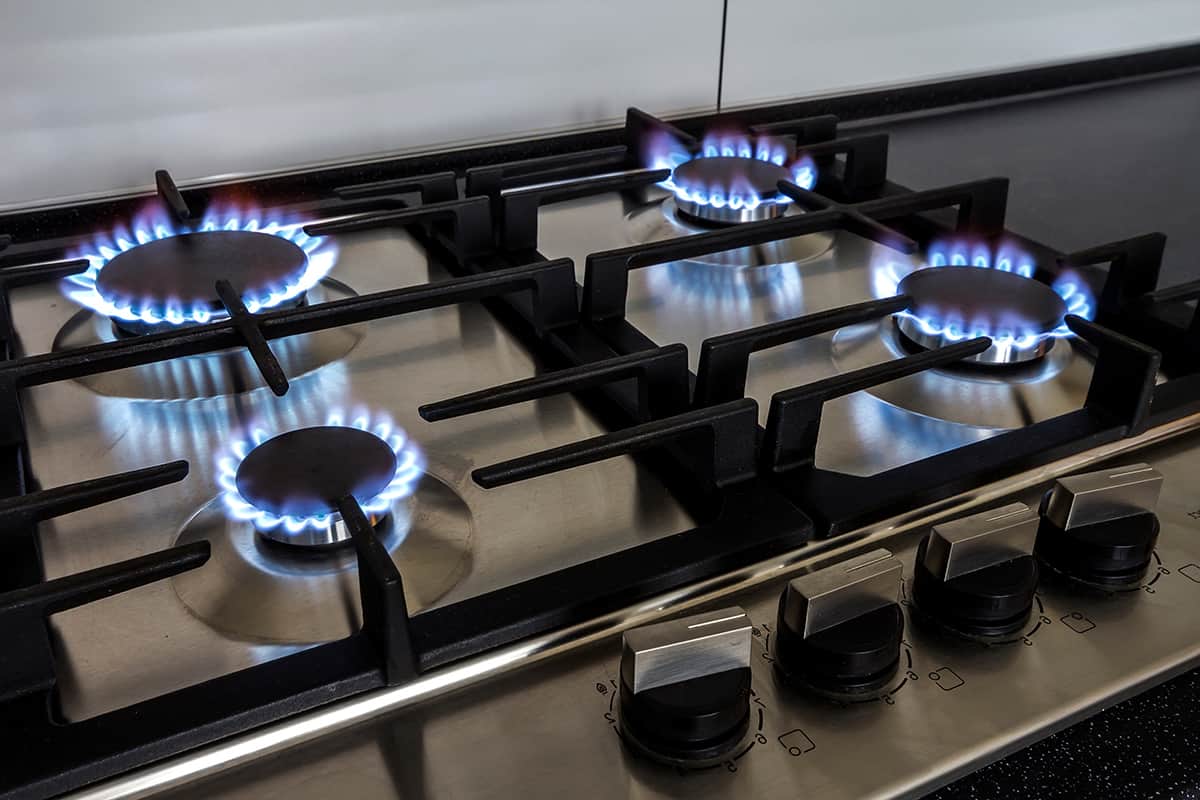Home>Ideas and Tips>Natural Gas Safety: Recognizing The Signs Of A Leak


Ideas and Tips
Natural Gas Safety: Recognizing The Signs Of A Leak
Published: October 26, 2024
Learn to recognize the signs of a natural gas leak, take immediate action, and implement preventive measures to ensure safety at home.
(Many of the links in this article redirect to a specific reviewed product. Your purchase of these products through affiliate links helps to generate commission for Storables.com, at no extra cost. Learn more)
Natural gas is a vital component of modern life, providing heat, power, and convenience to millions of households and businesses. However, with its widespread use comes the potential for safety risks, particularly in the form of leaks. Recognizing the signs of a natural gas leak is crucial for preventing accidents, ensuring safety, and protecting both human life and property. In this article, we will delve into the various indicators of a natural gas leak, the steps to take if you suspect a leak, and preventive measures to avoid future incidents.
Understanding Natural Gas Leaks
Natural gas is a colorless, odorless, and nontoxic gas under normal conditions. However, to make it easier to detect leaks, utility companies add mercaptan, a chemical with a strong sulfur or rotten egg smell. This odorant is added in such a way that it is detectable at concentrations that are below the lower explosive limit of natural gas, thereby providing an early warning system for potential leaks.
Read more: 5 Real Dangers of a Gas Leak
Recognizing the Signs of a Gas Leak
Identifying a natural gas leak can be done through a combination of visual, auditory, and olfactory cues.
Visual Signs
-
Bubbling in Standing Water: One of the most visible signs of a gas leak is persistent bubbling in standing water or wet areas. If you notice continuous bubbles forming in ponds, creeks, or flooded areas, it could indicate an underground leak.
-
Discolored Vegetation: Dead or discolored vegetation around the pipeline area is another indicator. Natural gas can kill plants by depleting the oxygen in the soil and causing root damage.
-
White Cloud or Fog: A dense white cloud or fog near the pipeline can also signify a leak. This cloud is often seen when gas escapes into the air.
-
Frozen Ground: Unexplained frozen ground near the pipeline area might indicate that gas is seeping into the soil and freezing it.
-
Liquid on the Ground: A pool of liquid on the ground near a pipeline could be a sign of a leak. This liquid might be natural gas itself or water contaminated with gas.
-
Dust Spraying into the Air: If you notice dust spraying into the air from a hole in the ground, it could be an indication of an underground gas leak.
Auditory Signs
-
Hissing Sounds: A hissing or whistling sound near a gas appliance or pipeline is a clear indicator of a potential leak. This noise occurs when gas escapes through a small opening in the pipe.
-
Blowing Noises: Blowing noises near your gas line are also signs of a leak. These sounds can be indicative of gas forcibly leaking out of a pipe.
Olfactory Signs
- Sulfur or Rotten Egg Smell: The most common and noticeable sign of a natural gas leak is the distinct odor of rotten eggs or sulfur. This smell is added to natural gas as an odorant to help people detect leaks quickly.
What to Do If You Suspect a Gas Leak
If you suspect a natural gas leak, it is crucial to take immediate action to ensure your safety and the safety of those around you.
Indoor Leaks
-
Evacuate Immediately: If you suspect a gas leak inside your home, evacuate everyone from the building immediately. Do not use electric switches, telephones (including cell phones), or anything that could cause a spark.
-
Ventilate the Area: Once you are outside, open all doors and windows to ventilate the area and allow the gas to disperse safely. Never ventilate while personnel are inside.
-
Shut Off Gas Supply: If it is safe to do so and you know how, turn off the gas supply at the main valve. This valve is typically located on the gas meter, usually outside a building or home.
-
Contact Emergency Services: Call your gas company’s emergency hotline immediately from outside. Contact emergency services if anyone needs medical attention.
-
Monitor with CGI (Combustible Gas Indicator): If a CGI is available, continue monitoring until the gas company arrives.
Outdoor Leaks
-
Evacuate the Area Immediately: If you suspect an outdoor gas leak, evacuate the area immediately. Contact the local natural gas utility immediately to shut off the gas.
-
Avoid Ignition Hazards: Turn off radios, pagers, and cell phones or leave them in your vehicle if possible. Do not use doorbells, light switches, matches or lighters. If you must use a flashlight, turn it on before approaching the area.
-
Maintain Safe Distance: Move in a crosswind direction away from the leak or vapor cloud and maintain a safe distance.
-
Warn Others: Warn others to stay away from the leak. Abandon any equipment being used in or near the area.
-
Call Emergency Services: Call your gas company’s emergency hotline from a safe location and alert them about the leak.
Preventive Measures for Gas Safety
Preventing gas leaks is crucial for maintaining safety and avoiding potential hazards.
Regular Maintenance Checks
-
Schedule Inspections: Ensure gas appliances receive regular inspections and maintenance by qualified technicians to keep them in prime working condition.
-
Test for Leaks: Routinely test for leaks using soapy water. Mix water with dishwashing soap inside a spray bottle and spray the solution directly on pipes, hoses, and valves. If there is a leak, the solution will bubble where the leak is detected.
-
Avoid Soaps with Ammonia: Be sure to avoid using any soaps that contain ammonia as this can cause brass fittings to become brittle and crack.
-
Install Gas Detectors: Consider installing a gas detector in your home, especially in areas where gas appliances are used frequently. These detectors can provide an early warning of gas leaks before they become hazardous.
Avoiding Hazards During Construction or Excavation
-
Mark Underground Lines: During construction or excavation projects, ensure that underground gas lines are properly marked and avoided to prevent accidental damage.
-
Regular Monitoring of Tree Growth: Regularly monitor tree growth near gas lines to prevent tree roots from causing cracks or breaks in the pipes.
-
Avoid Planting Shrubs and Fences Near Lines: Avoid planting shrubs, installing fences, mailboxes, or sprinkler systems near gas lines as these can pose serious safety hazards.
Additional Safety Tips
-
Monitor Pets: Pets can sometimes sense changes in the environment before humans do. If your pets are acting unusually agitated, lethargic, or if they suddenly become ill without any apparent cause, it could be a sign of a gas leak affecting their sensitive respiratory systems.
-
Identify Unusual Odors: Identify unusual odors promptly. One of the most recognizable signs of a gas leak is the distinct odor of rotten eggs or sulfur. If you notice this smell, take immediate action.
-
Listen for Hissing Sounds: Listen for hissing sounds near gas appliances or pipelines. If you hear these sounds, it could indicate a leak is present and requires attention.
-
Monitor Physical Symptoms: Gas leaks can cause physical symptoms such as headaches, dizziness, nausea, fatigue, and irregular breathing. If you experience any of these symptoms in areas where gas is used, investigate further.
Read more: How To Disconnect A Gas Cooktop
Conclusion
Recognizing the signs of a natural gas leak is crucial for preventing accidents and ensuring safety. By understanding visual, auditory, and olfactory cues and taking immediate action if you suspect a leak, you can protect yourself and those around you from potential hazards. Regular maintenance checks, avoiding hazards during construction or excavation projects, and installing gas detectors are also essential preventive measures for maintaining gas safety. Always stay vigilant and proactive in detecting gas leaks to live safely at home with this valuable resource.
By following these guidelines and staying informed about natural gas safety tips, you can significantly reduce the risk associated with gas leaks and enjoy a safer living environment. Remember that early detection is key to preventing accidents and ensuring that everyone remains safe around natural gas systems.
Was this page helpful?
At Storables.com, we guarantee accurate and reliable information. Our content, validated by Expert Board Contributors, is crafted following stringent Editorial Policies. We're committed to providing you with well-researched, expert-backed insights for all your informational needs.















0 thoughts on “Natural Gas Safety: Recognizing The Signs Of A Leak”